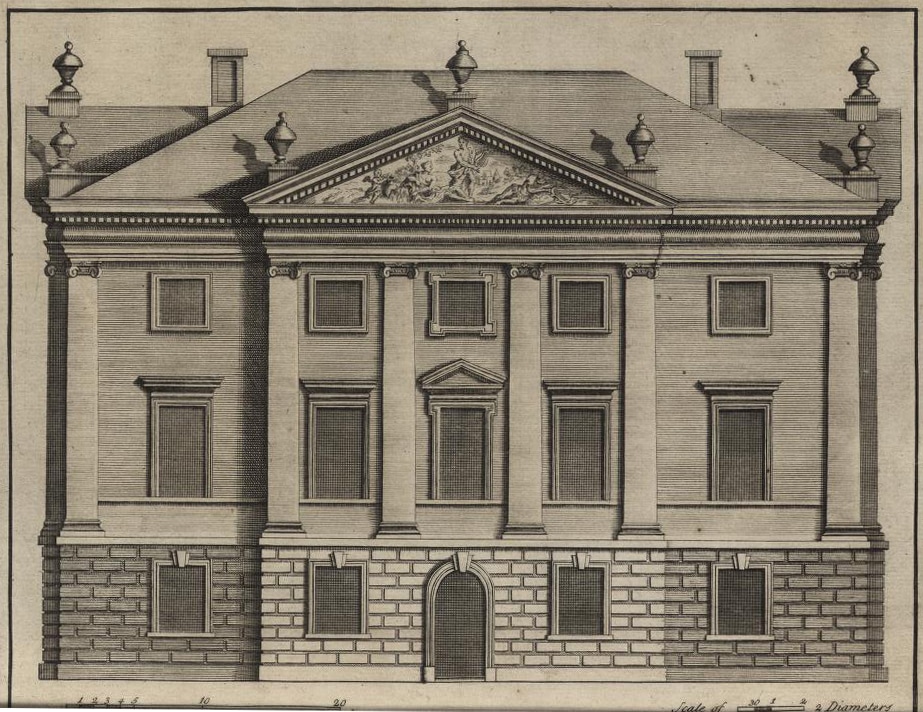(1703-1754)
Roger Morris and Lord Herbert (later 9th Earl of Pembroke) were the architects of Marble Hill House. It has been generally accepted that Roger Morris received help and advice from one of the leading Palladian architects Colen Campbell. In Campbell’s third volume of Vitruvius Britannicus, there is an illustration of a house in Twittenham, which is almost certainly Marble Hill. Did Campbell do the initial designs for Marble Hill and then pass on this commission to Lord Herbert and Roger Morris as he was too busy with other commissions? The three volumes of Vitruvius Britannicus were published by Campbell to promote himself as an architect, but in the text Campbell did not make any claim that he was in any way involved in the design of this house at Twittenham. I propose to suggest that Roger Morris would have more likely turned to his cousin, Robert Morris for help.
Robert Morris was born in Twickenham and he appeared to have designed at least one house, Culverthorpe Hall, Lincolnshire, but he worked mostly as a surveyor. By 1740 he was living near Grosvenor Square, which suggests that he was by then reasonably prosperous. Sir Howard Colvin (A Biographical Dictionary of British Architects 1600-1840) described Robert Morris as probably the most important architectural theoretician of the Palladian period.
Robert Morris wrote a number of books on architecture and design. His most important works were An Essay in Defence of Ancient Architecture, published in 1728 and Lectures on Architecture, published in 1734. The first book was an attack on the Baroque and promoted the ideal of Classical simplicity, which was very much in tune with what the Palladian architects such as Lord Burlington were promoting. In Lectures on Architecture he argued that the design of any building was based on seven ideal geometric proportions. James Lees-Milne (the Earls of Creation) said that the proportions which Robert Morris recommended, were carried out to the letter at Marble House. The second part of the Lectures on Architecture are dedicated to Roger Morris. We know from a satirical poem by Jonathan Swift, written the year the book was published, that the Marble Hill was far from built in 1727, when he wrote of Marble Hill:
My house was built but for show
My lady’s empty pocket know;
And now she will not have a shilling
To raise the stairs, or build the ceiling
Robert Morris showed a picture (below) in his book, in Defence of Ancient Architecture, of an Ideal House and the book was written just a year later and probably a year before Marble Hill itself was completed and this design, as one can see, is actually very similar to Marble Hill, when it was actually completed. This, together with the other evidence would suggest, in my view, that Robert may well have been closely involved with the building of this house.

John Moses
Writing for the Marble Hill Society
